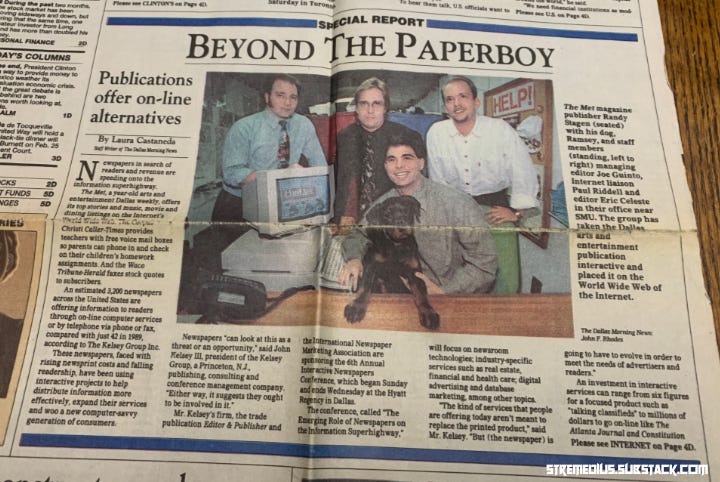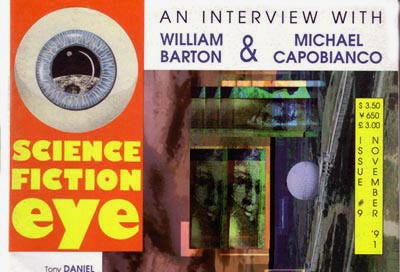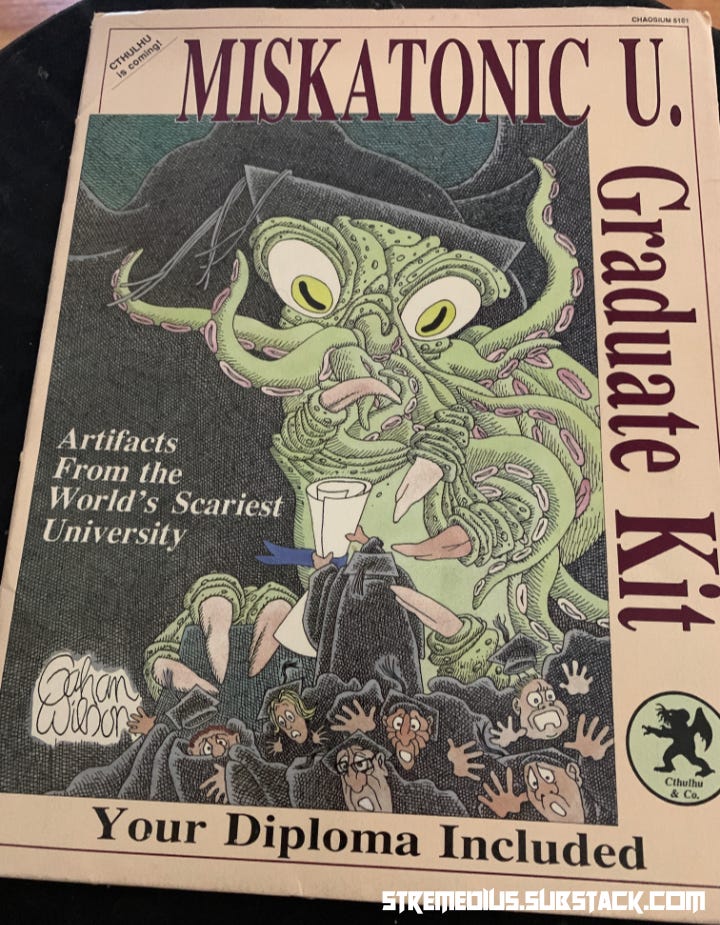Personal Interlude: "Plans Within Plans"
Doing the Utmost To Make Newsletter Promotion Fun
(Remember how, in the days of standard episodic television before streaming and binging, many dramas and some comedies would give a thumbnail update starting with “Previously on…”, flashing scenes so fast that people starting midway through a season or story were more confused than before? Well, that’s what this newsletter is like. Look at these as regular updates of how the sausage is made, with what, and whether or not the staff washed their hands after they used the toilet. Or, worse, if they only washed their hands before using the toilet.)

As of this writing, the Annals of St. Remedius Medical College newsletter celebrates its 115th installment, nine months after its debut, with about 60 new installments to go with various backstory reprints and revisions. This isn’t shabby, even if it seems as if half of SubStack’s writers are pumping out daily installments every morning. I’m writing these in a completely different genre, though, and I suspect that newsletter readers couldn’t handle more than two of these per week without suffering cross-reference and research overload. As it should be.
Right now, the Annals are going exactly the way they should. I get the occasional person who complains that comments are limited to paid subscribers: anybody can send responses to a newsletter at any time or write me directly at StRemedius over at gmail duet com, and I’m always glad for feedback, but the reason why the Annals only allow comments from those paying for the privilege is also why most news sites no longer include forums under articles. Namely, the slight return on free subscribers compared to the efforts to clean out spam and vile from drive-by commenters, crypto and gold scammers, and anybody hoping to get a slightly better search engine placing from inserted links isn’t worth the cleaning and disinfecting time. I mean, I love you all, but if you really need to express a particular point, feel free to go to email. I do read them all, really.
That said, aside from being able to beat me over the head and shoulders about my assumptions, presumptions, and affectations, what’s the incentive to pay for a monthly or yearly subscription? Aside from the inevitable “keeping the writer alive and financially solvent” argument, which is pretty much a newsletter mantra these days, this is a completely valid question. Right now, what everybody is getting is preamble: nine months later, you’re getting the parameters of the St. Remedius experience, and the original plan was to offer the backstories for free and include actual stories with paid subscriptions. (As might be told, there IS a plot to get in the way of the story, and St. Remedius started out as a TV miniseries proposal that got shelved when the current streaming video environment imploded.) However, that’s not quite fair to readers who would love to go for yearly subscriptions but simply can’t afford it, and I don’t want to leave them out of the St. Remedius saga. So what’s the alternative?
One word: zines.
For those coming in late, before a two-decade side-track into raising and selling carnivorous plants, your humble chronicler once had a writing career. This happened mostly because of the explosion in so-called desktop publishing in the mid-1980s: where previously publishing a magazine took all sorts of arcane resources and references or at least a lot of determination, the advent of the first desktop publishing software allowed anyone with the wherewithall to put out their own magazines. (For brevity’s sake, better writers than I have gone to great lengths to chronicle the early history of the word “zine” from its advent in science fiction fandom, especially with the Alternative Press Association zines of the 1930s. This is a newsletter, not a book.) They ranged from hand-folded photocopied four-pagers to sophisticated volumes with professional covers, and the only thing they had in common was a relatively small publication run and a limited, some say “erratic,” publication schedule.
As the joke by 1995 went, “any idiot can start up a zine, and many do,” with a lot of validity. Access to a Macintosh, a copy of Quark XPress, and access to a scanner for graphics, and you were off to the races. In those pre-internet days, so, so many people put out their own publications. You had people with Really Strong Opinions and nowhere else to put them. You had people tired of gatekeeping newspaper and magazine editors and publishers who wanted to bypass existing publishing and journalistic bottlenecks. (You also had those bottlenecks blowing up on the zine community, as I discovered with a weekly newspaper assistant editor who threw a tantrum in my face because I got more and better reviews of my zine output than he got for his “humor” column.) You had people who desperately wanted to become gatekeepers of their own and wanted to build up entourages. You had people who desperately wanted the attention they got from publication but then freaked out when they got it. You had people who just loved to drop hand grenades into septic tanks, preferably with as large a crowd around the tank as possible before it blew. You had people who realized the limitations of current publishing and wanted to try something really different. You had raging narcissists. You had cultists. You had hobbyists. You had true believers and cynics and smartalecks and egomaniacs and hyperpartisans, and if they could lay out something that could be taken to a printshop and had the money for paper and ink, they could get their word out. Thanks to megabookstore chains such as Borders and Barnes & Noble, they could even get their zines in front of unsuspecting audiences, but most were happy with networks of independent book and music stores, the zine review zine Factsheet Five, and word of mouth. Sometimes these worked out so well that writers an/or editors went on to careers in professional publishing. Sometimes these worked out so well that the zine cratered and everyone involved only talks to each other via legal representation. If you say “this sounds just like the internet,” you’re right.
Ultimately, most casual discussion on the subject of zines blames their demise on the switchover from print to online venues. That was a part, but also involved was chicanery with megabookstores (both Borders and Barnes & Noble being notorious for both overordering small press magazines, demanding credit for unsold copies that may or may not have gone onto the shelves, then paying their invoices when Corporate damn well felt like it) and the demise of Fine Print Distribution, the main zine distributor in the United States. (A friend and cohort from high school worked for Fine Print in the late 1990s, and whoo boy did he have tales to tell about its organization and lack thereof.) By 2001, the zine as we all knew it was gone: increases in print and paper costs combined with insufficient circulation numbers killed most of them, and others tried their best to move them to the Web.
Not that this stopped zine progression. Some beloved zines were run under the radar by fans of the originals. Others, such as the seminal goth culture zine Carpe Noctem, responded to fans writing the editorial team requesting a revival by publishing crowdsourced volumes. Still others went retro, enjoying putting out a completely analog publication that only requires light to be enjoyed. The current zine community is nowhere near the size it was in 1994, but that’s not necessarily an issue, and the practitioners are more about the zine itself than in trying to get fame from them. So far.
So what the hell does this have to do with St. Remedius? The one last piece came from a chance finding while going through my late best friend’s library: back in 1987, Chaosium, the game publisher behind the famed role-playing game Call of Cthulhu, put out the Miskatonic U, Graduate Kit, a compendium of ephemera including a course guide for a degree in Medieval Metaphysics, a cafeteria mat with ads from surrounding businesses, a parking lot window sticker, a bumper sticker for the Miskatonic Fighting Cephalopods, and a diploma for a Bachelors degree, with the option of buying a Masters or Ph.D diploma by mail order. As could be told by the cover illustration by the great Gahan Wilson, an enthusiast for the RPG, it didn’t even begin to take itself seriously, which helps explain why it was dismissed by most gamers and embraced deeply by humorists and other smartasses.
Again, what does this have to do with St. Remedius? Well, for the average subscriber, nothing is going to affect regular newsletter readers, and there’s absolutely no requirement to switch to a paid subscription. For those who do, though, expect all sorts of weirdness over the rest of the year, partly inspired by the great Matt Howarth, including the opportunity to enter drawings for one-of-a-kind St. Remedius items. Keep checking back: it’s going to get weird, to use the Don Webb reference. And yes, there will be lots of zine goodness: there’s too much going on with St. Remedius for there not to be.
Cooking References
One of the longrunning repercussions of 2023’s extended hospital vacation and removal of The World’s Longest Human Appendix is an ongoing change in eating habits, mostly due to nine days of extensive antibiotic and antifungal applications that completely changed my intestinal biota. Nearly 18 months later, I’m still coming to terms with previous favorites that are now nauseating (I’d sooner eat at The Worst Toilet in Scotland than at most fast food places these days), and trying my utmost to fill dietary gaps with new experiences. Portion sizes are another big issue (long gone are the days where I can have more than three slices of pizza at a sitting), so the book Izakaya: Japanese Bar Food from Hardie Grant Books may be a lifesaver. Expect further reports soon.
Other Reading
Current reading that may or may not be tied to previous and upcoming St. Remedius installments, but may be of interest anyway:
Nonfiction: An Artist In Treason: The Extraordinary Double Life of General James Wilkinson by Andro Linklater (Walker, 2009)
Nonfiction/Fiction (Graphic Novel): The Thrilling Adventures of Lovelace and Babbage by Sydney Padua (Pantheon, 2015)
Fiction (Graphic Novel): Giant Days by John Allison, Lissa Tremain, Max Sarin, and Whitney Cogar (BOOM! Studios)
Musical Influence: The Cassandra Complex
Events
Well, the plan is to get out away from the computer and meet, you know, people. With that in mind, January started with scoping out potential events to crash throughout 2025. The golden mean is being invited to speak at Dragon Con in Atlanta this coming August: not that I’m arrogant enough to think I deserve a berth, but getting one means that this little newsletter has enough of an audience that the Dragon Con crew thinks I’m worthy. Alas, they have so many other guests with greater potential that I didn’t make the cut, but don’t let that stop you from going if you feel so inclined: if anything else, the opportunity to hear James Palmer read from his works is worth the trip all on its own.
Later on in the year, things get weird in Dallas: as always, my beloved city is a Ray Bradbury cosplayer, so we squeeze in as much as we can after the Arctic lows subside but before outside temperatures hit “lead smelter.” Among other things, since I’m no longer a vendor, I can wander the halls of both Texas Frightmare Weekend and the Oddities & Curiosities Expo on my own initiative this coming May, and I hope to do so with St. Remedius goodies.
Finally, something quite a bit more quiet. The general response to the concept of Silent Book Club, where readers gather to read in silence in groups, ranges widely from wild enthusiasm to grumbling dismissal. Speaking from experience, your humble essayist leas toward the former, especially after trying it firsthand at the flagship Half Price Books here in Dallas. If you can make this month’s event on February 12, we’ll see you there. If not, there’s always March.
Final Words

It’s a bit hard to realize how much has changed in the world in the last three decades, but the photo above is a great birds-eye view (yes, that’s my natural hair color), back when print publications focused on what to look for online and newspapers had to emphasize “the World Wide Web of the Internet” so readers didn’t become confused. Thirty years ago, The Met was the first publication in Texas to have a Web presence. Now, the paper has been dead for nearly a quarter-century, and only a few archivists could even tell you what the paper was about. The plan isn’t to bring back the 1990s. The plan is to bring back a few things that made the 1990s particularly fun and make them better. And so it goes.
Want more hints as to the history of St. Remedius Medical College? Check out Backstories and Fragments. Want to get caught up on the St. Remedius story so far? Check out the main archive. Want to forget all of that and look at cat pictures from a beast who dreams of his own OnlyFans for his birthday? Check out Mandatory Parker. And feel free to pass on word far and wide: the more, the merrier.





